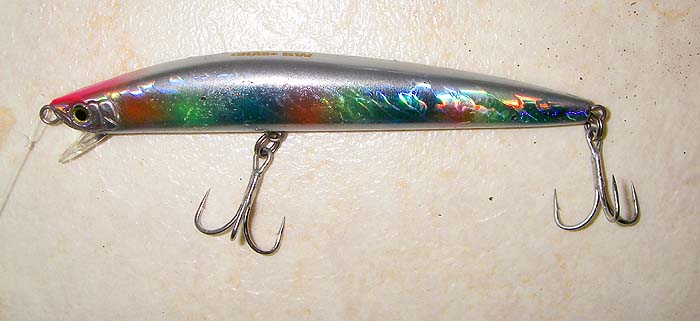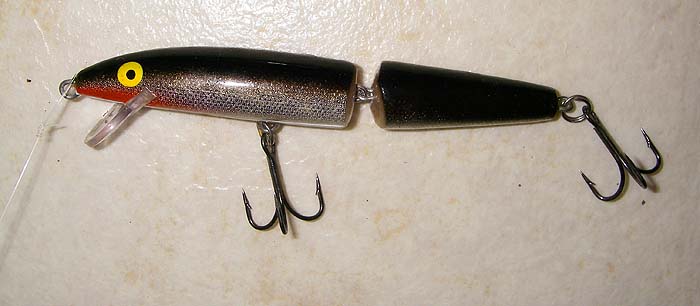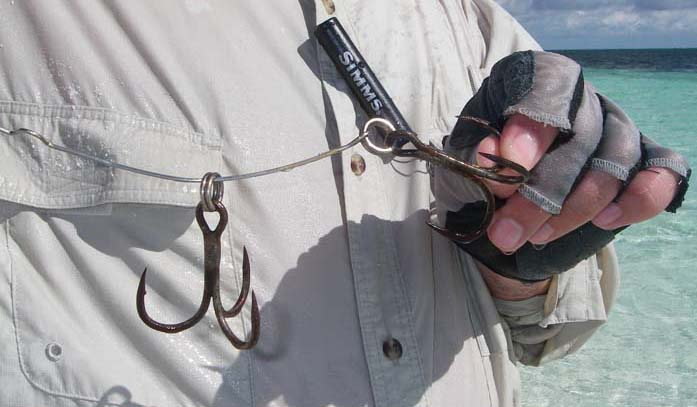 '
'Information Page.
What lure and why.
The commonest sentence that I see in my email inbox is still - "I'm new to bass lure fishing - What lures should I be buying?"
Of course I usually say more or less the same thing. You are best to start with one or two long casting, floating/shallow diving plugs such as Angels Kiss or Maria Chase. To be honest it's difficult to go far wrong with these lures and provided you can find the right sort of place at the right time (not quite so easy) you will catch bass on them. However I have rarely gone into detail about how or why I have settled on particular lures. I'll try to do that now.
In the early days my rod was a twelve-foot Daiwa carp rod (1.75lb TC) and an ABU Cardinal 77 reel loaded with 8lb nylon monofilament. The entire set up was very effective in all but the most extreme conditions. The rod and reel were excellent but eventually they went out of production or were superceded by new 'improved' models so I had to change. Custom made ten or eleven foot 'spinning rods', now commonplace, replaced the carp rod and after trying a variety of reels, including Shimano Baitrunners (on which I hardly ever used the baitrunner facility), I eventually settled on a Shimano Stradic 4000 which is tough and saltwater resistant with a good clutch and line lay. There were a few teething problems as you might expect. Firstly the 8lb line was ample for casting and for playing and landing bass but it was touch and go whether, because of the stretch, it would hook fish and at the other extreme whether it would pull a lure out of the kelp. The use of heavier nylon resulted in a fairly dramatic reduction in casting range. Nowadays, fine, soft braided lines of 20-30lb BS have solved the problems.
To return to lures. My lure box contains a limited range of items and some of them are rarely used (only on special occasions when conditions demand). As a rule I am likely to tie on a floating-shallow diving plug or a popper. To get back to basics I started off bassing many years ago with plugs such as the ABU Killer and the unjointed Rapala. These were fine and caught loads of fish. However they were quite lightweight and so did not cast well into the wind because of their tendency to 'tumble' in the air. The use of a jointed Rapala more or less eliminated the tumbling tendency but casting range was more of a problem. To be fair most bass are well within range of these balsa lures but there will always be the occasion when you need a bit more range. I tried 'count-down Rapalas and these were fine given a few feet of water. Often there was not the luxury of depth so the appearance of moulded plastic ultra-shallow-divers such as the thunderstick was a Godsend. More recently the advent of a number of good-sized, shallow-running, buoyant plugs with ball bearing weights to assist the cast has answered the bass angler's prayers. When it comes to bassing this is about as good as it gets.
Having said this, at times the water can be too shallow and snag ridden even for a plug that dives to 15 or 20 centimetres below the surface. This is where poppers come in. Steve Butler and his pals fishing in North Wales showed that bass would take surface poppers well. I suppose that we should have realised much sooner that this would be the case from the number of bites obtained 'as the plug hit the water'. Be that as it may it was immediately obvious that these 'surface fishing' lures could be successfully deployed over ground where the rocks and weed were actually right at the surface - what a bonus! The original surface killers were Chug Bugs but there is now a whole range of effective types from Yo Zuri Magnum Sliders to Rapala Skitterpops and TD Pencils. These differ mainly in the 'degree of splash' that they create on the retrieve but I'm not sure whether this means that (as you might perhaps suppose) less splash is best in calm conditions.
What else needs to be considered when choosing a lure? Well, provided it casts well, works at the appropriate depth and has good sharp hooks the main consideration is strength. Even the sharpest hooks will be useless if they open out, snap (the worst) or fall apart under prolonged strain. Perhaps these features are less important with our native fish than if you are on holiday in warmer climes. A bonefish, tarpon, barracuda or jack will soon test your trebles to destruction. Similarly you need decent split rings to connect the hooks to the lure. These days I use stainless rings of known strength (40lb-60lb usually) as connectors. Of course any split ring that becomes 'strained' as you fit a new hook MUST be replaced. The final straw is when the lure falls apart. NOT much that you can do about this, except to ensure that any lure you buy is 'wired right through the body'. Simple loops and 'screw in eyes' are just not up to it at the end of the day.
If you have any comments or questions about fish, methods, tactics or 'what have you.'get in touch with me by sending an E-MAIL to - docladle@hotmail.com
Wired through.
 '
'Wired through.
 '
'Wired through.
 '
'